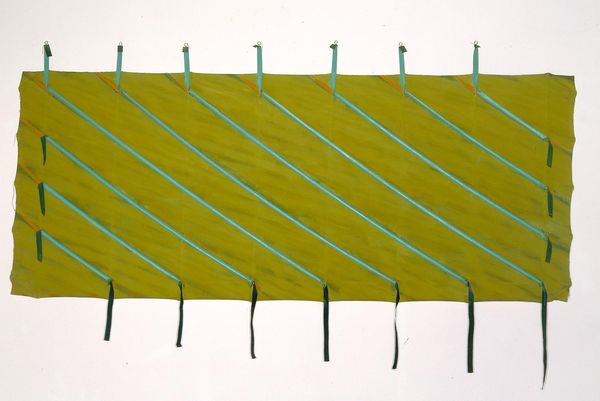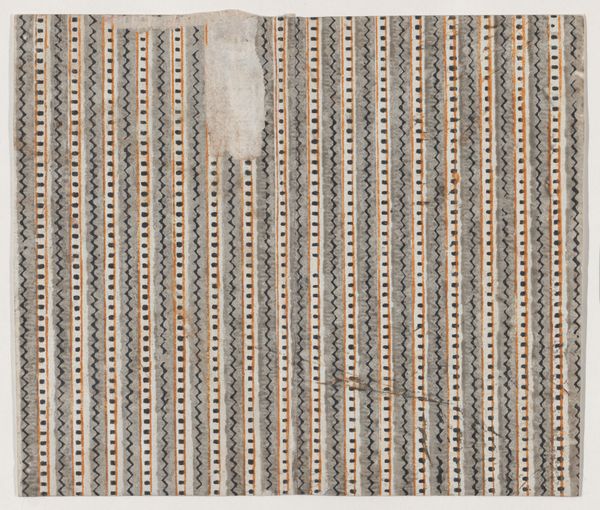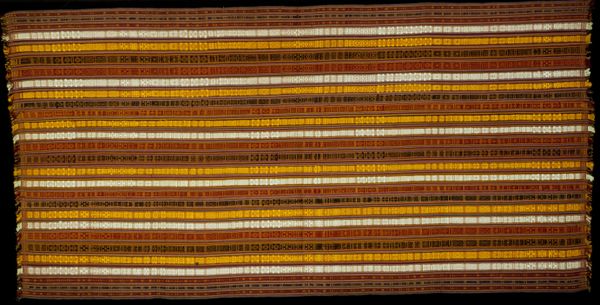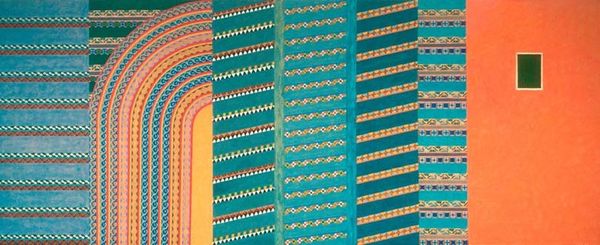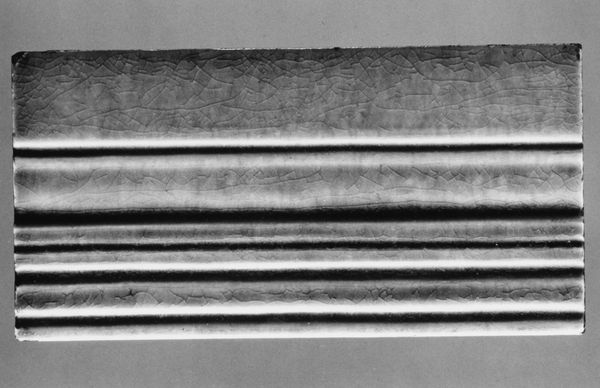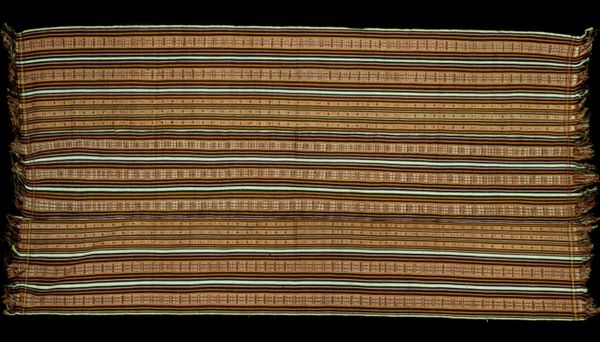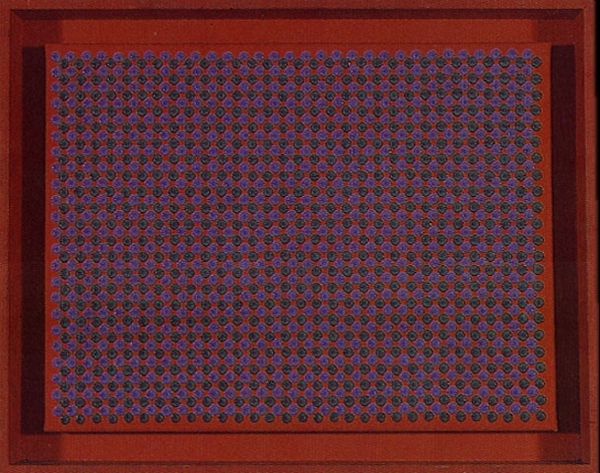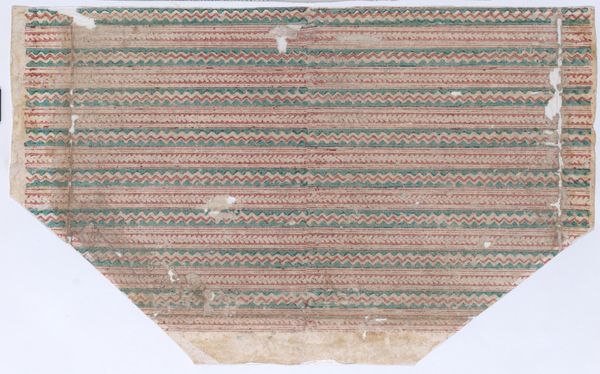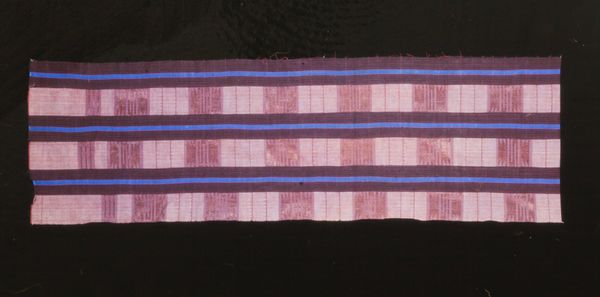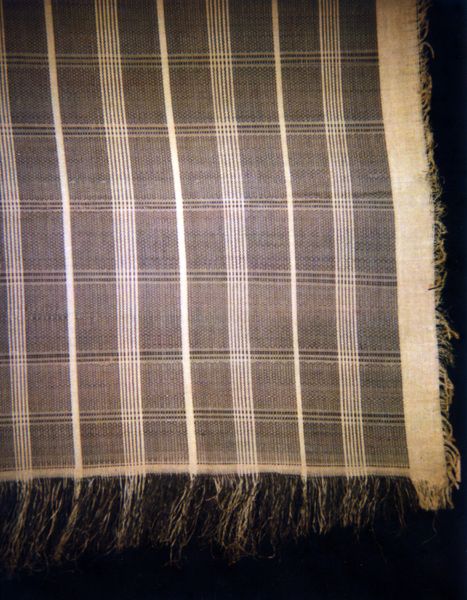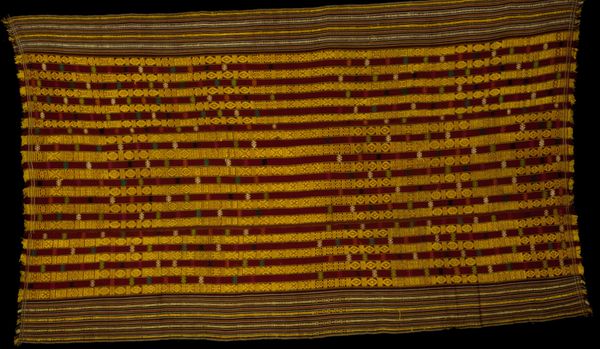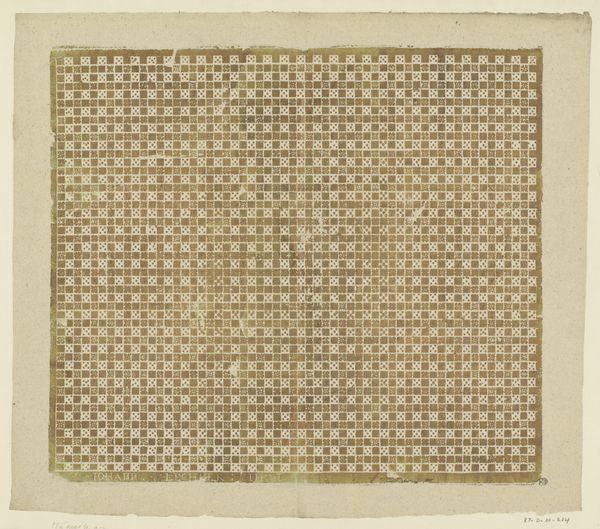
Book cover with overall geometric and stripe pattern 1800 - 1900
0:00
0:00
drawing, print, textile
#
drawing
# print
#
textile
#
geometric
#
decorative-art
Dimensions: Sheet: 7 15/16 × 9 3/8 in. (20.2 × 23.8 cm)
Copyright: Public Domain
Curator: This is a book cover, displaying an overall geometric and stripe pattern. The artwork is undated, though it is estimated to be from somewhere in the 19th century. It is currently held at the Metropolitan Museum of Art. Editor: It has a very rhythmic, almost hypnotic effect. The repetition of the geometric patterns and lines draws you in, though the limited color palette keeps it from being too overwhelming. Curator: Indeed. I wonder about the artisan, now unknown, who likely produced this cover. Was this their primary means of income, meticulously crafting each detail? Or was it created in bulk? The process and means by which such a cover came to exist are endlessly fascinating. It's difficult to determine what the social or cultural conditions might have influenced this. Editor: I see it more as a product of its time—decorative arts gained popularity in the 19th century as the middle class grew and started commissioning and collecting work. Bookbinding shifted away from a purely functional practice toward art. The social pressure to own or to display beautiful possessions certainly drove this change. Curator: You're likely correct. As decoration, the design isn't terribly expressive—the horizontal bands emphasize the material properties of the cover itself: the cloth and ink. Were the cover meant to convey a message beyond pure aesthetics, a non-figurative format might appear a conscious choice in an historical context that expects visual literacy to incorporate figuration. The way it interacts with light and shadow on the shelf gives a depth to something relatively flat. Editor: Its reliance on the decorative is part of what defines its role historically. Museums shape our perception. They give aesthetic validation that in turn solidifies this type of design's influence within certain social groups. The accessibility afforded by printmaking makes the consumption of this pattern less limited, increasing its popularity and solidifying the relevance of textiles as valid material. Curator: Exactly, from a purely materialist perspective, something utilitarian becomes highly valuable when considered within those various forces of production and presentation that you've referenced. Editor: Thinking about all the conditions that allow us to enjoy the sight of this pattern right here is mind-blowing. It shifts its meaning beyond aesthetics into cultural identity. Curator: Indeed. Now it makes me appreciate even further the human labor of its making!
Comments
No comments
Be the first to comment and join the conversation on the ultimate creative platform.


